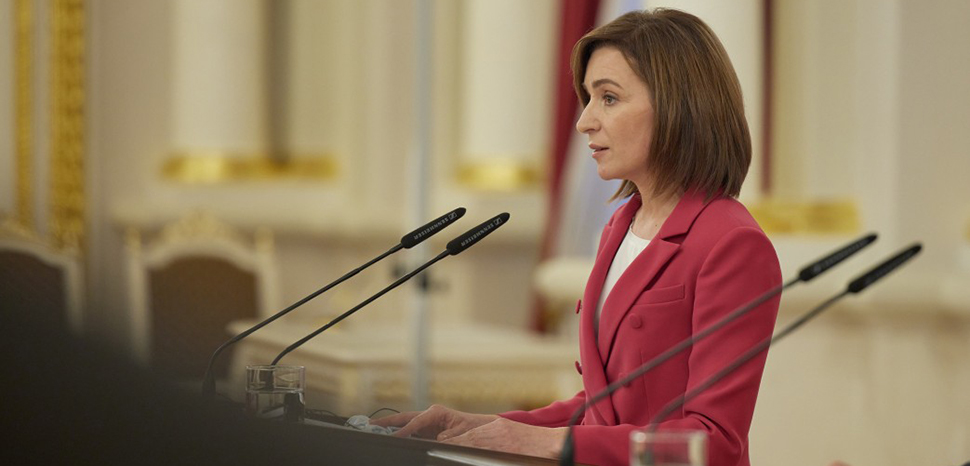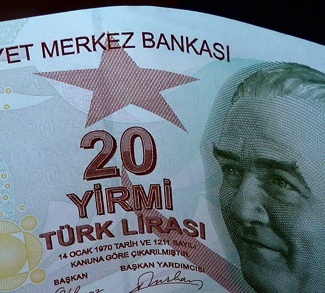Moldovan President Maia Sandu was asked during an interview in the Moldovan TV program In PROfunzime about a potential unification between Moldova and neighboring Romania. Unification is an idea that has been discussed since Moldova obtained its independence from the Soviet Union in 1991; it has been utilized to advance various political agendas in Chisinau, Bucharest, as well as Moscow, and even Tiraspol, the de facto capital of Moldova’s separatist region, Transnistria. Exactly how likely unification is to occur in the foreseeable future is debatable, but the very idea provokes strong feelings and emotions, and also serves different objectives.
Two or more countries unifying into a single entity is not an event that often occurs nowadays – separatism is more common – hence even a theoretical scenario in which Moldova and Romania unify deserves a proper discussion, considering local and regional factors.
A brief recap of a complex history
The people of Moldova and Romania have vast cultural and historical ties, dating back to the 14th century, via historical figures such as Dragoș Vodă or Dragoș the Founder. He was a Romanian landowner who represented a Hungarian monarch and became the first ruler of the territory where modern-day Moldova exists. The territory was eventually annexed by the Ottoman Empire, becoming a vassal state from 1538 until the 1812 Treaty of Bucharest, via which the Russian Empire gained control of the area. The Russian revolutions of 1905 and 1917 sparked a longing for independence among the inhabitants of modern Moldova. In 1918, the territory, then known as Bessarabia, declared independence from Russia and joined the Kingdom of Romania.
Even though Romania allied with the Axis in World War II, the secret 1939 Molotov-Ribbentrop pact defined spheres of influence in Eastern Europe between Berlin and Moscow. In 1940, one year before Operation Barbarossa, following an ultimatum given to the Romanian King Carol II, Russia occupied Moldova. The Moldavian Soviet Socialist Republic (Moldavian SSR) was established on August 2, 1940.
This history is vital to keep in mind because it provides historical justifications for this potential unification since, as recently as one century ago, the territories of Romania and Moldova (then-Bessarabia) were indeed one country.
What did President Sandu say?
According to a poll by iData, up to 44% of Moldovans may support unification with Romania. When asked about these results during her interview for In PROfunzime, President Sandu acknowledged that many of her citizens support a union between the two countries, while others are afraid of it. However, regarding the likelihood of unification, the Moldovan head of state noted that “such a major project can only be done with sufficient majority support in society.”
Moldovan journalist Lorena Bogza pressed the issue, asking, “would 50% plus 1 be enough?” to which President Sandu replied, “More likely because such a project must be supported, however, by an overwhelming majority of citizens.”
We have already discussed the historical justifications for this unification; however, cultural arguments must be made. After all, Romanians and Moldovans share a common language. Moreover, because of Moldova’s many internal problems, including economic woes, many Moldovans have migrated to Romania, among other countries, searching for a better life. As a result, as many as one quarter of Moldovans now possess dual citizenship, Moldovan and Romanian.
However, it is also true that many Moldovans do not want their country to create a unified entity with Romania. A sense of patriotism is at play here, as well as cultural (including language) ties to Russia; after all, Moldova was a member of the USSR for decades, and many Moldovans are fluent in Russian. Additionally, apart from Transnistria, another Moldovan region that will likely not support unification is Gagauzia, which in 2014 voted in an illegal referendum to reject closer ties between Chisinau and the European Union. The Gagauzia region has a degree of autonomy within Moldova, making the situation very different than Transnistria, but anti-unification sentiments should not be overlooked.
Unification is supported, but it is not likely
At this point, it is necessary to make a distinction. While significant portions of the population in both countries support unification, a substantial amount similarly believes that it will not happen or is unnecessary. While support for unification is at around 44% in Moldova, a 2018 poll by the Romanian Bureau of Social Research showed that as many as 74% of Romanians would vote in favor of unification in a hypothetical referendum over this issue. On the other hand, 15% would vote against it, while 11% would not vote at all.
Polls also show that Romanians are skeptical if such a union will be achieved, due to issues like Transnistria, a lack of plans by politicians in Bucharest and Chisinau to achieve this objective, and international considerations, among other issues. The 2018 Romanian BSR poll showed that only 27% of Romanians “considered the union necessary or very needed.” Moldovan citizens interviewed by the author of this analysis similarly noted that while they support unification with Romania, they do not believe that should be the priority for the Moldovan government. Other issues, like tackling the country’s endemic corruption, must be priorities.
The complicated geopolitics of unification
When it comes to Moldova, a potential unification with Romania has broad regional and internal ramifications. The two names to keep in mind here are Transnistria and Romania. Since 1992, Transnistria has been a de facto separatist entity across the Dniester River. The region is not recognized as independent by any country, including Russia, its benefactor and key supporter. Nevertheless, the separatist territory is a crucial region from which Moscow can monitor developments in Southeastern Europe, particularly in Moldova and neighboring Ukraine. As a result, Russian troops continue to be stationed in Transnistria.
While Chisinau has attempted to approach the separatist leaders in Tiraspol to convince them to strengthen ties, it is clear that Transnistria has no significant interest to return to Chisinau’s orbit, and Moscow is not interested in permitting Transnistria to do so. The breakaway region held “elections” in December, with pro-Russian President Vadim Krasnoselsky winning re-election.
The Moldova-Romanian unification question, thus, is utilized by Tiraspol and Moscow to support Transnistria’s separatist ambitions. They argue that Transnistrian culture and identity need to be protected as unification between Moldova and Romania would mean that Transnistria would be dominated by Romanian speakers and its culture would be erased. For example, Konstantin Zatulin, the first deputy chairman of the Russian State Duma Committee on Commonwealth of Independent States’ affairs, argued in late 2021 that Moldova is “attempting to seize Transnistria,” thereby justifying Russian military presence in the breakaway region under the banner of “peacekeepers.”
As previously mentioned, Gagauzia, another Moldovan region, has also displayed rebellious tendencies, and it is unclear how Gagauzians would react if Chisinau’s interest in unification moved forward. President Sandu was likely referring to Gagauzians and patriotic and Russia-friendly Moldovans when she said many Moldovans would reject this idea.
On the other hand, there is the question of how willing and eager the Romanian government and population are to unify with Moldova. Romanian authorities routinely applaud close bilateral relations. In 2018, to commemorate the 100th anniversary of the unification, the Romanian Parliament adopted a resolution to unify the two countries in the future. For Romania, unification would mean an expansion of its territory and resources and an influx of new citizens as the country’s population is declining (19 million in 2020, compared to 23 million in 1990). Similarly, as previously mentioned, most Romanians support this idea, however they do not view unification as a priority.
Looking ahead
The unification of two, or more states, is an issue that does not often occur in modern history. In fact, since the end of the Cold War, around the world, there have been only two such instances: the unification of Yemen (Yemen Arab Republic/North Yemen and the People’s Democratic Republic of Yemen/South Yemen); and the reunification of Germany (East and West). Both unifications occurred in 1990.
More often than not, countries break apart via peaceful or violent means, like the Soviet Union, Yugoslavia, and Czechoslovakia. The world’s newest nations are relatively young: East Timor in 2002, Kosovo in 2008, and South Sudan in 2011. Thus, should Romania and Moldova unify into a single state in the foreseeable future, this would be a milestone in modern history as the norm is that countries prefer to break apart rather than unify.
With that said, a unification between Romania and Moldova is unlikely to occur anytime soon. There is certainly interest from in both countries. However, segments of both populations are also against this idea. Then there is Moldova’s eternal thorn on the side, namely Russian-backed Transnistria, that Chisinau must be consider. Unifying with Romania and bringing Transnistria back to its orbit are two essentially contradictory objectives. Therefore, a unification process would be a long, legally complex, and complicated process that cannot not be rushed.
As Moldovans continue their quest for a national identity, with ties both to Romania and Russia, with a separatist region and plenty of problems at home, unification with Romania may prove to be either a utopia or a dystopia.
The views expressed in this article are those of the authors alone and do not necessarily reflect those of Geopoliticalmonitor.com or any institution the author is associated with.




